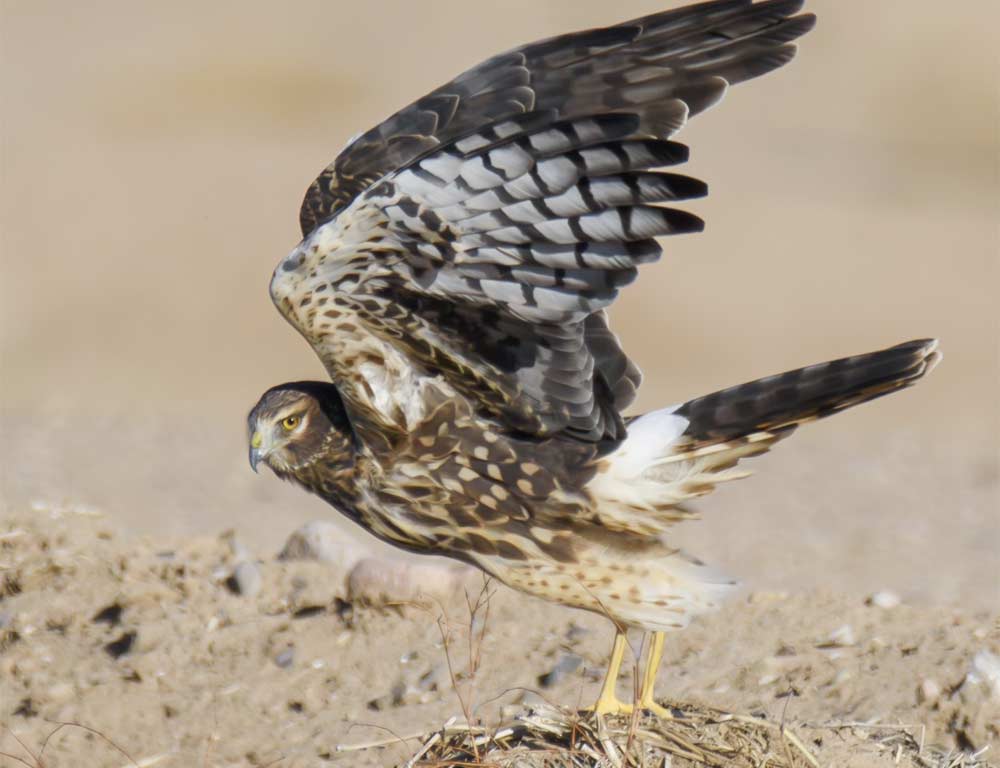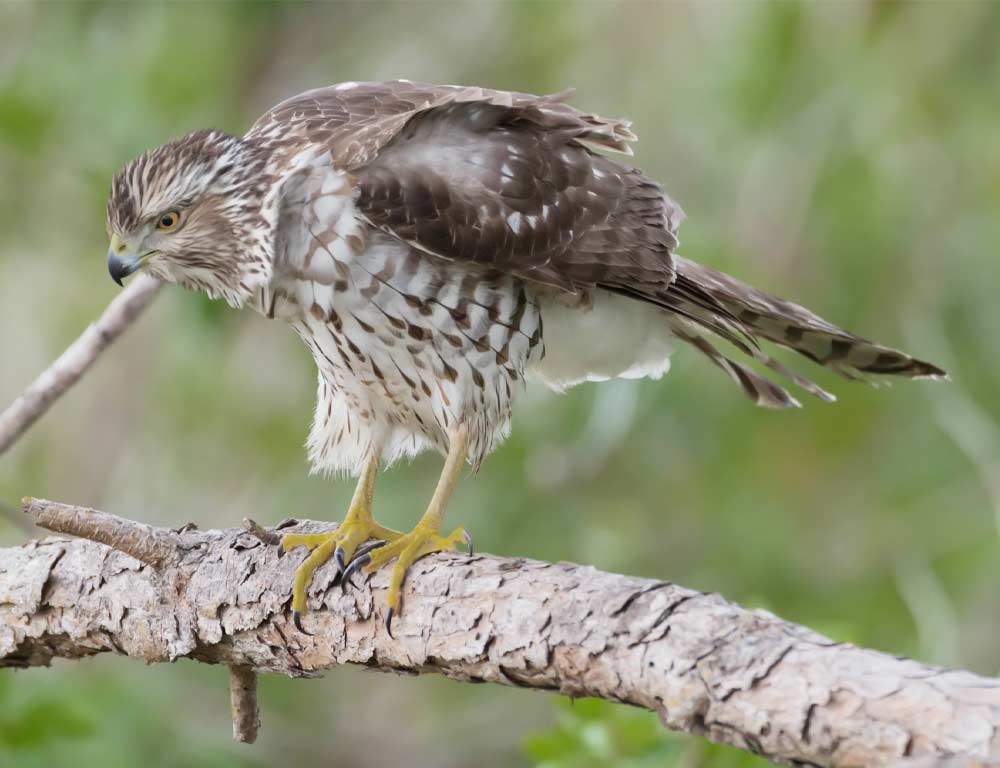Hawks in Hawaii exhibit a captivating and diverse presence across the archipelago, adding a unique dimension to the region’s rich biodiversity.
The Hawaiian islands are home to two primary species of hawks: the ‘Io (Hawaiian Hawk) and the Red-tailed Hawk.
The ‘Io, an endemic species, holds significant cultural importance in Hawaiian mythology, symbolizing the connection between humans and the natural world.
With its distinct appearance and behavior, the ‘Io plays a crucial role in the island ecosystem, acting as both a predator and a cultural emblem.
Additionally, the Red-tailed Hawk, though not native to the islands, has found a habitat in Hawaii, contributing to the avian tapestry.
This exploration delves into the characteristics, conservation efforts, and the coexistence of these remarkable hawks in the Hawaiian landscape.
Is Hawaii A Good Place for Hawks?
Hawaii provides a unique and suitable environment for certain hawk species, although it presents advantages and challenges for these birds.
Here are the reasons why Hawaii is a good place for Hawks:
Diverse Habitats
Hawaii’s diverse landscapes, including open grasslands, dense forests, and coastal areas, offer a range of habitats that can accommodate different hawk species.
This diversity allows hawks to adapt to various environments, enhancing their chances of finding suitable nesting and hunting grounds.
Food Availability
Hawaii’s abundance of small mammals, birds, insects, and reptiles provides a steady food supply for hawks. The varied ecosystems on the islands support a rich biodiversity, sustaining the dietary needs of these raptors.
Cultural Significance
Hawks, particularly the Hawaiian Hawk (‘Io), hold cultural significance in Hawaiian mythology. This cultural connection can contribute to a positive perception of hawks and foster efforts to protect and conserve these birds.
Here are the common challenges Hawks in Hawaii face:
Introduced Predators
Hawaii faces challenges from introduced species, including predatory mammals like rats and mongooses.
These introduced predators may threaten hawk nests, eggs, and chicks, impacting the reproductive success of these birds.
Habitat Loss
Urbanization, agriculture, and invasive plant species have led to habitat loss and fragmentation in Hawaii. This can limit hawks’ available nesting sites and foraging areas, potentially affecting their populations.
Conservation Concerns
The Hawaiian Hawk (‘Io) is listed as a species of conservation concern due to its limited population and potential threats.
Conservation efforts are essential to mitigate these challenges and ensure the long-term survival of the endemic hawk species.
While Hawaii offers suitable habitats and resources for certain hawk species, conservation efforts are crucial to address the challenges of introduced predators and habitat loss.
Proper management and protection of these raptors contribute to maintaining the delicate balance of Hawaii’s ecosystems and preserving the cultural significance associated with these majestic birds.
Common Characteristics of Hawks in Hawaii?

Hawks in Hawaii, despite representing different species such as the Northern Harrier and the Hawaiian Hawk (‘Io), share several common characteristics that highlight their adaptation to the island environment:
Adaptation to Diverse Habitats
Both the Northern Harrier and the Hawaiian Hawk exhibit adaptability to various landscapes, ranging from open grasslands and marshes to forested regions.
This versatility enables them to explore and thrive in different ecosystems across the Hawaiian islands.
Keen Eyesight and Hunting Skills
Hawks are renowned for their exceptional eyesight, a crucial adaptation for hunting.
Whether soaring above open fields or navigating through dense forests, these birds utilize their keen vision to locate and capture prey, typically small mammals, birds, insects, and reptiles.
Territorial Behavior
Hawks in Hawaii, particularly the Hawaiian Hawk (‘Io), display territorial behavior. They establish and defend territories to secure resources and breeding sites.
This behavior is vital in maintaining ecological balance within the island ecosystem.
Migratory Patterns
While the Hawaiian Hawk is an endemic species and a year-round resident, the Northern Harrier is migratory, occasionally visiting the Hawaiian islands.
Migration allows the Northern Harrier to follow seasonal changes in prey abundance, showcasing the adaptability of hawks to dynamic environmental conditions.
Cultural Significance
Hawks, especially the Hawaiian Hawk (‘Io), hold cultural significance in Hawaiian mythology.
Revered as a spiritual symbol, the ‘Io connects the natural world with human existence, underlining the intricate relationship between the islands’ culture and biodiversity.
Conservation Concerns
Both hawk species face conservation challenges in Hawaii. Habitat loss, introduced predators, and human activities threaten their populations.
Conservation efforts are crucial to ensure the survival of these remarkable birds and their integral role in the island ecosystem.
Understanding these shared characteristics provides a comprehensive glimpse into the lives of hawks in Hawaii, emphasizing their importance in the delicate balance of the archipelago’s ecosystems.
2 Types of Hawks in Hawaii
Two notable species, the migratory Northern Harrier and the endemic Hawaiian Hawk (‘Io), grace the archipelago with their unique characteristics and roles in the island ecosystem.
Let’s embark on a journey to explore the distinctive traits, behaviors, and cultural significance of these hawks, unraveling the tapestry of avian life that enriches the tropical paradise of Hawaii.
1. Northern Harrier

- Scientific Name: Circus hudsonius
- Category: Bird of Prey
- Population: Varies, with some local fluctuations
- Life Span: 5 to 10 years
- Size: 18 to 24 inches
- Weight: 10 to 26 ounces
- Food: Small mammals, birds, reptiles, and insects
- Wingspan: 40 to 48 inches
The Northern Harrier, characterized by its owl-like facial disc and distinctive flight pattern, is a migratory bird of prey that occasionally visits Hawaii. These raptors favor open areas such as marshes and grasslands.
With keen eyesight and agile flight, they hunt small mammals, birds, reptiles, and insects, employing a unique low-hovering behavior known as “harrier-style” hunting.
Their elongated wings and tail enhance their maneuverability during these flights.
Despite not being a permanent resident, the Northern Harrier plays a role in maintaining ecological balance in the Hawaiian landscape by contributing to the control of local prey populations.
2. Hawaiian Hawk (‘Io)

- Scientific Name: Buteo solitarius
- Category: Endemic Bird of Prey
- Population: Estimated around 3,000 individuals
- Life Span: Up to 20 years
- Size: Approximately 16 to 18 inches
- Weight: 1.5 to 2 pounds
- Food: Small birds, mammals, insects, and reptiles
- Wingspan: Around 3.5 feet
As an endemic species and the only hawk native to Hawaii, the ‘Io holds cultural significance in Hawaiian mythology. These hawks exhibit a territorial nature, often seen soaring over the forested regions of the islands.
Their diet consists of small birds, mammals, insects, and reptiles, and they are known for their agile flight and keen hunting skills. With a limited population, conservation efforts are crucial to ensure the survival of this species.
The ‘Io symbolizes the delicate balance between nature and culture in the Hawaiian ecosystem, making its protection integral to preserving the islands’ biodiversity.
Steps to Preserve Hawks in Hawaii
Preserving hawks in Hawaii requires a multifaceted approach that addresses these birds’ ecological and cultural aspects. Here are steps to consider for the conservation and preservation of hawks in Hawaii:
Habitat Protection and Restoration
A fundamental step to preserve hawks in Hawaii involves protecting and restoring their natural habitats. This includes implementing measures to prevent further habitat loss due to urbanization and invasive species.
Conservation organizations and governmental agencies can work together to identify critical habitats, establish protected areas, and undertake restoration projects to enhance the quality of these environments.
Control of Invasive Species
Addressing the impact of introduced predators, such as rats and mongooses, is crucial for hawk conservation.
Implementing and intensifying control measures for these invasive species can help mitigate their threats to hawk nests, eggs, and chicks. Monitoring programs should be established to assess the effectiveness of predator control efforts.
Community Education and Involvement
Community engagement plays a pivotal role in hawk preservation. Educational programs can raise awareness about the importance of hawks in the ecosystem and their cultural significance.
Encouraging responsible behavior, such as refraining from disturbing nests and reporting injured or distressed hawks, fosters a sense of collective responsibility among local communities.
Research and Monitoring Programs
Establishing comprehensive research and monitoring programs is essential to gather data on hawk populations, behavior, and potential threats.
Regular surveys, satellite tracking, and genetic studies can contribute valuable insights into the health and dynamics of hawk populations. This information forms the basis for informed conservation strategies and adaptive management practices.
Legislation and Enforcement
Enacting and enforcing protective legislation is critical for hawk conservation.
Legal measures can include designating certain areas as protected habitats, regulating human activities that may impact hawks, and imposing penalties for wildlife-related offenses.
Robust enforcement mechanisms ensure compliance with conservation laws and act as a deterrent against illegal activities.
Collaboration with Indigenous Communities
Given the cultural significance of hawks in Hawaii, collaborating with indigenous communities is vital for effective conservation.
Involving local communities in conservation initiatives, respecting traditional ecological knowledge, and integrating cultural practices into management plans can foster a holistic and sustainable approach to hawk preservation.
Rehabilitation and Release Programs
Establishing rehabilitation and release programs for injured or orphaned hawks contributes to their recovery and population sustainability.
Wildlife rehabilitation centers can work with conservation organizations to provide medical care and rehabilitation and, when possible, release hawks back into their natural habitats.
These programs play a crucial role in mitigating the impact of human-related incidents on hawk populations.
By implementing these comprehensive strategies, Hawaii can actively contribute to preserving hawks, ensuring their continued presence in the islands while promoting ecological balance and cultural heritage.
Wrapping Up
In wrapping up our exploration of hawks in Hawaii, it becomes evident that these majestic raptors play a crucial role in the islands’ ecosystems.
From the Hawaiian Hawk, or ‘Io, native to the archipelago, to occasional visitors like the Red-tailed Hawk, each species contributes to the delicate ecological balance.
The adaptability of these birds, their hunting prowess, and the cultural significance attached to the ‘Io showcase the intricate connections between wildlife and the unique environment of Hawaii.
As guardians of the skies, hawks in Hawaii epitomize the harmony of nature amid the Pacific landscapes, providing a captivating glimpse into the islands’ avian diversity.